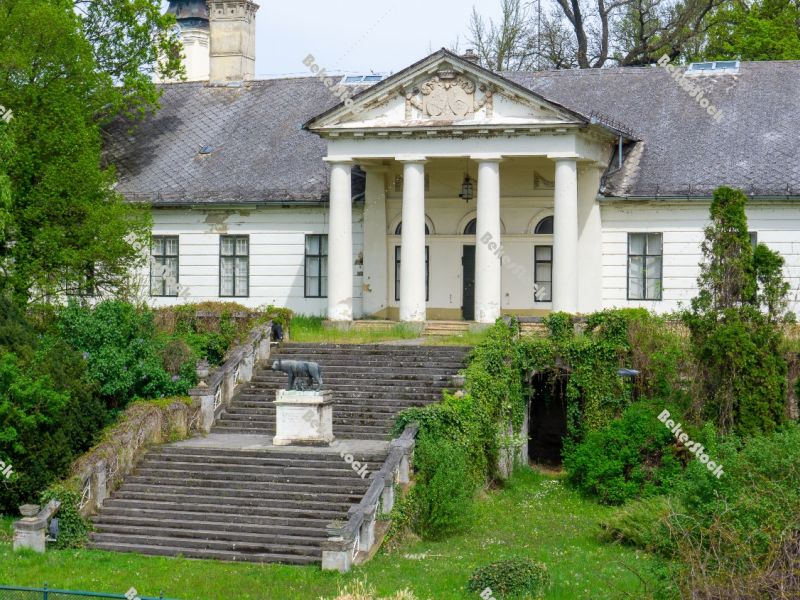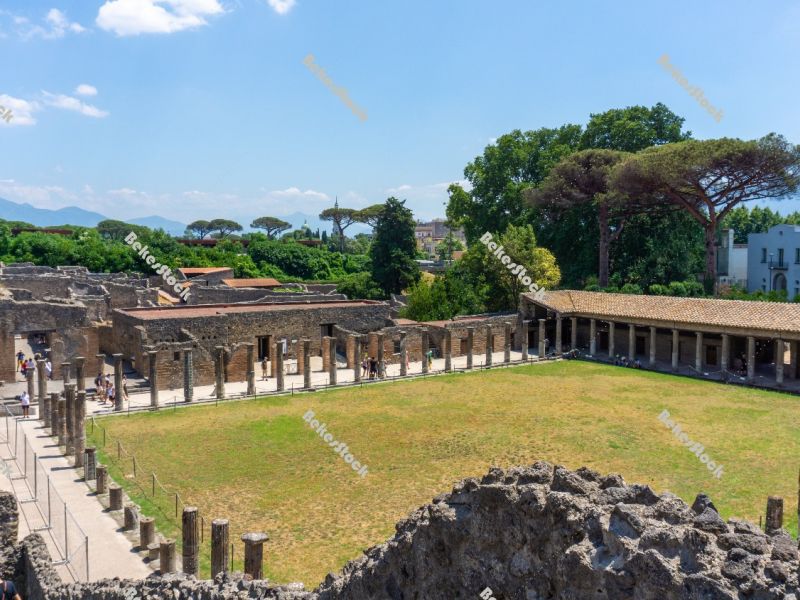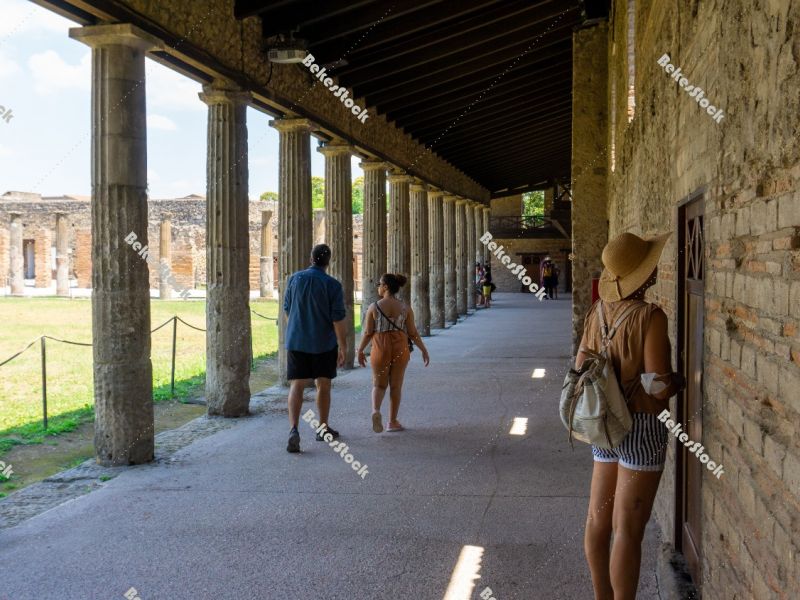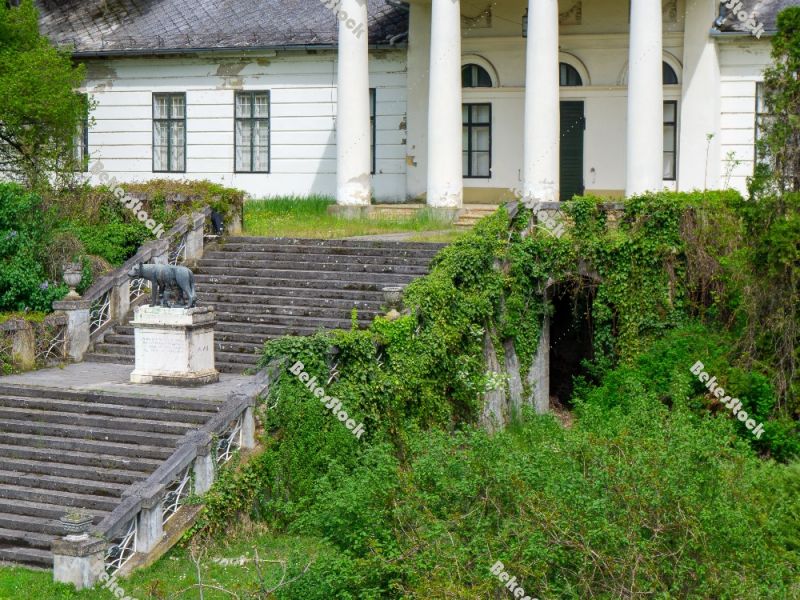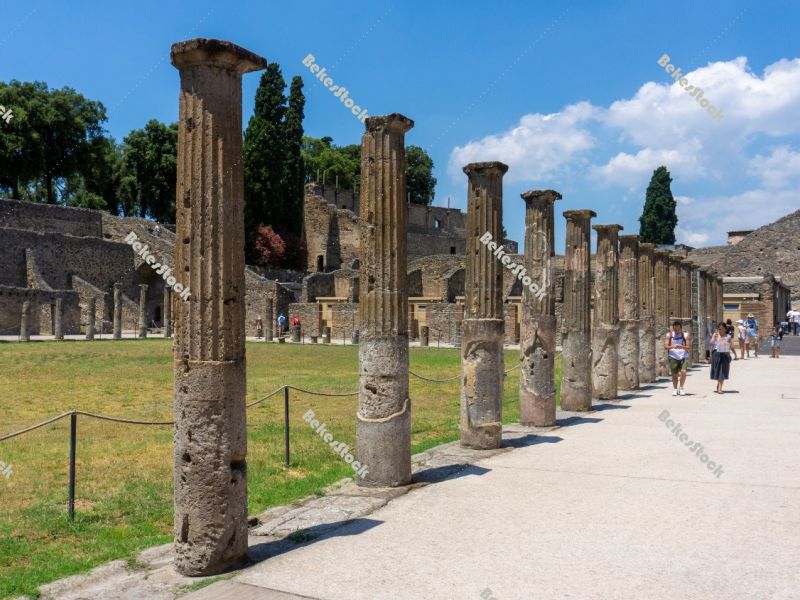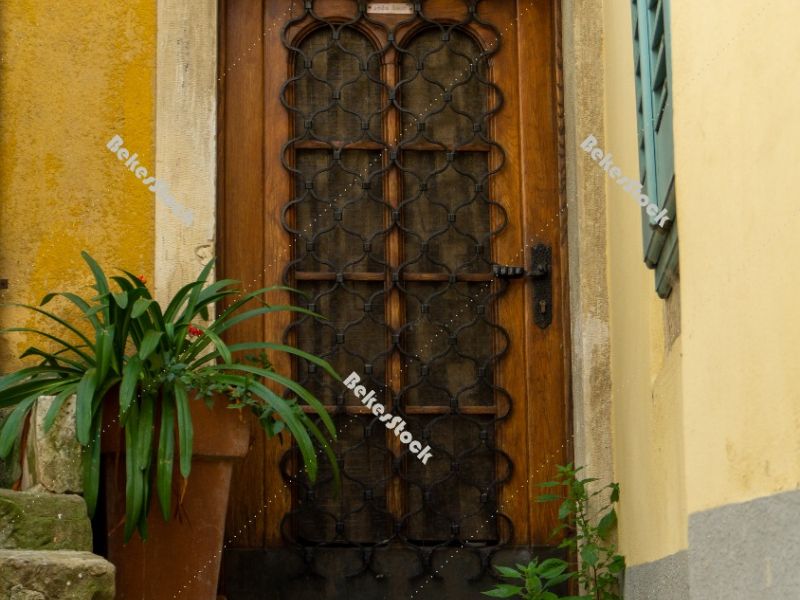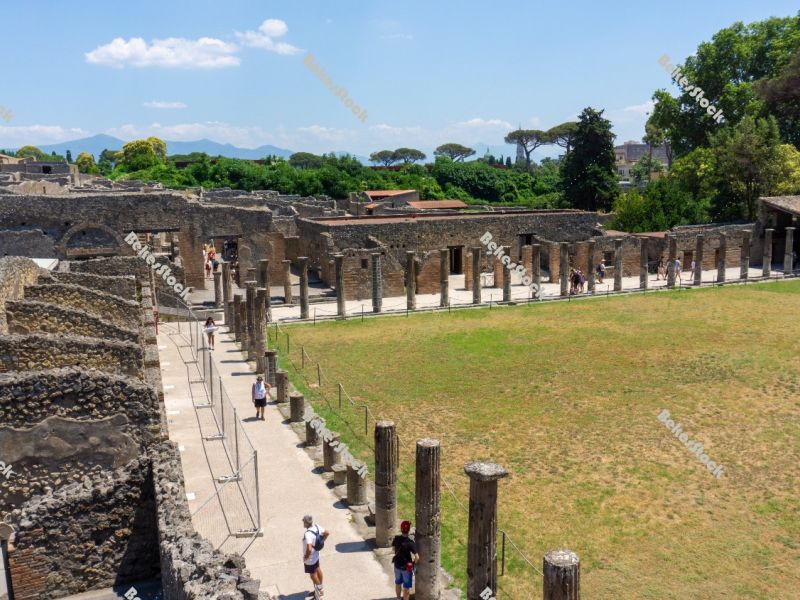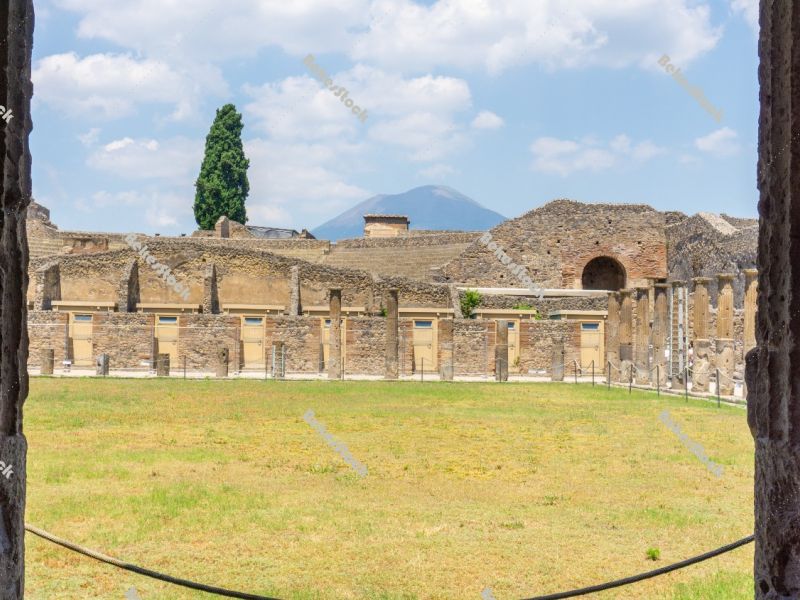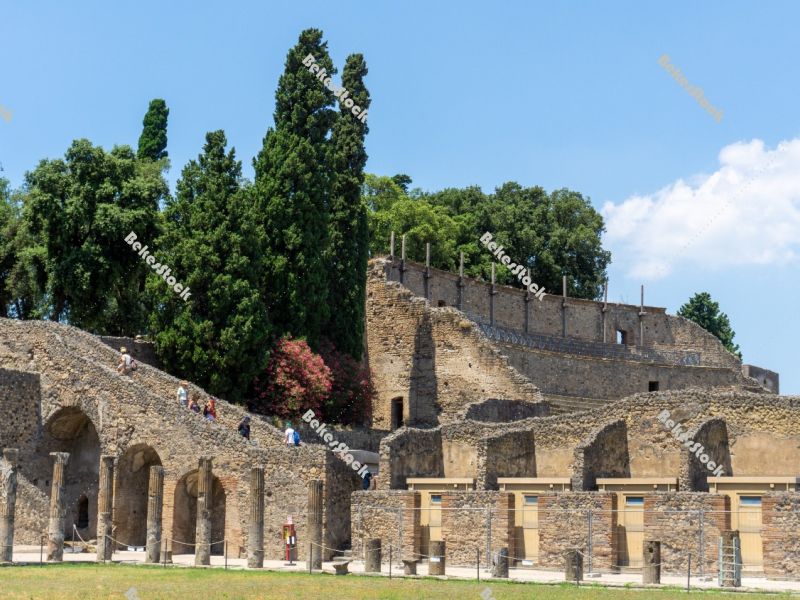Image Tags - stairs
-
Bolza Castle (`Bolza-kastély`). Szarvas, Bekes County, Hungary Bolza Castle (`Bolza-kastély`). Szarvas, Bekes County, Hungary
Bolza Castle (`Bolza-kastély`). The Bolza family was of Italian origin and settled in Hungary in the 18th century through marriage. Over the years they assimilated and became highly respected by the citizens of Szarvas. As a matter of fact, the Bolza family left behind a rich legacy, the most spectacular of which is the Bolza Castle. At the bottom of the stairs – as a remainder of the family’s Italian origin – Pál Bolza erected a replica of the wolf statue of Romulus and Remus, the legendary founders of Rome. Szarvas, Bekes county (Bekes megye), Hungary, May 2021. @bekesstock @csabaprog
hungary spring szarvastown cultural wolf bekes county bekesstock stairs szarvas italian mansion remus may bekes bekes megye view castle tradition szarvas town landscape 2021 tourism replica landmark building csabaprog outdoor vacation exterior town romulus rome famous bolza pál historical citizen palace travel statue house history citizens family bolza europe szarvasvaros renovated szarvasvárosBolza Castle (`Bolza-kastély`). The Bolza family was of Italian origin and settled in Hungary in the 18th century through marriage. Over the years they assimilated and became highly respected by the citizens of Szarvas. As a matter of fact, the Bolza family left behind a rich legacy, the most spectacular of which is the Bolza Castle. At the bottom of the stairs – as a remainder of the family’s Italian origin – Pál Bolza erected a replica of the wolf statue of Romulus and Remus, the legendary founders of Rome. Szarvas, Bekes county (Bekes megye), Hungary, May 2021. @bekesstock @csabaprog
hungary spring szarvastown cultural wolf bekes county bekesstock stairs szarvas italian mansion remus may bekes bekes megye view castle tradition szarvas town landscape 2021 tourism replica landmark building csabaprog outdoor vacation exterior town romulus rome famous bolza pál historical citizen palace travel statue house history citizens family bolza europe szarvasvaros renovated szarvasváros -
QUADRIPORTICUS OF THE THEATRES OR GLADIATORS BARRACKS in Pompeii QUADRIPORTICUS OF THE THEATRES OR GLADIATORS BARRACKS in Pompeii
QUADRIPORTICUS OF THE THEATRES OR GLADIATORS BARRACKS in Pompeii. In the background you can see mountains, trees and a blue sky. Behind the scene of the Large Theatre there is a large quadrangle surrounded by 74 Doric grey tuff columns of Nocera used as a foyer, an area where the spectators could stop during the intervals of the theatre shows. After the earthquake of 62 AD the building changed its function and became a barracks for gladiators, which resulted in certain parts of the building being reorganised. The most important rooms were those on the eastern side whereas the rooms upstairs may have been the apartments of the undertaker of the gladiators. Pompeii was an ancient city located in what is now the comune of Pompei near Naples in the Campania region of Italy. Pompeii, along with Herculaneum and many villas in the surrounding area, was buried under 4 to 6 m of volcanic ash and pumice in the eruption of Mount Vesuvius in AD 79 (1st century). Pompei, Naples (Napoli), Campania, Italy, July 2020. @csabaprog
ornament csabaprog decay gladiator city tourist panorama architectural sightseeing italian empire architecture paved barrack teatro houses building vesuvius old landmark mountains vacation town eruption rome historical disaster ruins 1st house history archaeology ancient sunny catastrophe historic volcano theatre doric trees roman journey trip vesuvio column tall ruined scenary mount died vesuvious century mediterranean excavation europe naples napoli unesco romanesque famous buried colorful excursion beautiful travel ash overlooked sky remains destroyed demolished tourism stone archeological italyQUADRIPORTICUS OF THE THEATRES OR GLADIATORS BARRACKS in Pompeii. In the background you can see mountains, trees and a blue sky. Behind the scene of the Large Theatre there is a large quadrangle surrounded by 74 Doric grey tuff columns of Nocera used as a foyer, an area where the spectators could stop during the intervals of the theatre shows. After the earthquake of 62 AD the building changed its function and became a barracks for gladiators, which resulted in certain parts of the building being reorganised. The most important rooms were those on the eastern side whereas the rooms upstairs may have been the apartments of the undertaker of the gladiators. Pompeii was an ancient city located in what is now the comune of Pompei near Naples in the Campania region of Italy. Pompeii, along with Herculaneum and many villas in the surrounding area, was buried under 4 to 6 m of volcanic ash and pumice in the eruption of Mount Vesuvius in AD 79 (1st century). Pompei, Naples (Napoli), Campania, Italy, July 2020. @csabaprog
ornament csabaprog decay gladiator city tourist panorama architectural sightseeing italian empire architecture paved barrack teatro houses building vesuvius old landmark mountains vacation town eruption rome historical disaster ruins 1st house history archaeology ancient sunny catastrophe historic volcano theatre doric trees roman journey trip vesuvio column tall ruined scenary mount died vesuvious century mediterranean excavation europe naples napoli unesco romanesque famous buried colorful excursion beautiful travel ash overlooked sky remains destroyed demolished tourism stone archeological italy -
Cloister - QUADRIPORTICUS OF THE THEATRES OR GLADIATORS BARRACKS Cloister - QUADRIPORTICUS OF THE THEATRES OR GLADIATORS BARRACKS
Cloister - QUADRIPORTICUS OF THE THEATRES OR GLADIATORS BARRACKS in Pompeii. A lady looks through a closed door. Behind the scene of the Large Theatre there is a large quadrangle surrounded by 74 Doric grey tuff columns of Nocera used as a foyer, an area where the spectators could stop during the intervals of the theatre shows. After the earthquake of 62 AD the building changed its function and became a barracks for gladiators, which resulted in certain parts of the building being reorganised. The most important rooms were those on the eastern side whereas the rooms upstairs may have been the apartments of the undertaker of the gladiators. Pompeii was an ancient city located in what is now the comune of Pompei near Naples in the Campania region of Italy. Pompeii, along with Herculaneum and many villas in the surrounding area, was buried under 4 to 6 m of volcanic ash and pumice in the eruption of Mount Vesuvius in AD 79 (1st century). Pompei, Naples (Napoli), Campania, Italy, July 2020. @csabaprog
ornament csabaprog decay gladiator city tourist lady architectural door sightseeing italian empire naples paved barrack teatro houses building vesuvius old landmark excavation vacation town eruption rome historical disaster ruins 1st house history archaeology ancient catastrophe historic volcano theatre doric roman looks journey trip vesuvio column tall ruined scenary mount died century mediterranean vesuvious architecture europe napoli unesco romanesque famous buried colorful excursion beautiful travel ash overlooked stone destroyed remains demolished tourism woman archeological italyCloister - QUADRIPORTICUS OF THE THEATRES OR GLADIATORS BARRACKS in Pompeii. A lady looks through a closed door. Behind the scene of the Large Theatre there is a large quadrangle surrounded by 74 Doric grey tuff columns of Nocera used as a foyer, an area where the spectators could stop during the intervals of the theatre shows. After the earthquake of 62 AD the building changed its function and became a barracks for gladiators, which resulted in certain parts of the building being reorganised. The most important rooms were those on the eastern side whereas the rooms upstairs may have been the apartments of the undertaker of the gladiators. Pompeii was an ancient city located in what is now the comune of Pompei near Naples in the Campania region of Italy. Pompeii, along with Herculaneum and many villas in the surrounding area, was buried under 4 to 6 m of volcanic ash and pumice in the eruption of Mount Vesuvius in AD 79 (1st century). Pompei, Naples (Napoli), Campania, Italy, July 2020. @csabaprog
ornament csabaprog decay gladiator city tourist lady architectural door sightseeing italian empire naples paved barrack teatro houses building vesuvius old landmark excavation vacation town eruption rome historical disaster ruins 1st house history archaeology ancient catastrophe historic volcano theatre doric roman looks journey trip vesuvio column tall ruined scenary mount died century mediterranean vesuvious architecture europe napoli unesco romanesque famous buried colorful excursion beautiful travel ash overlooked stone destroyed remains demolished tourism woman archeological italy -
Bolza Castle (`Bolza-kastély`). Szarvas, Bekes County, Hungary Bolza Castle (`Bolza-kastély`). Szarvas, Bekes County, Hungary
Bolza Castle (`Bolza-kastély`). The Bolza family was of Italian origin and settled in Hungary in the 18th century through marriage. Over the years they assimilated and became highly respected by the citizens of Szarvas. As a matter of fact, the Bolza family left behind a rich legacy, the most spectacular of which is the Bolza Castle. At the bottom of the stairs – as a remainder of the family’s Italian origin – Pál Bolza erected a replica of the wolf statue of Romulus and Remus, the legendary founders of Rome. Szarvas, Bekes county (Bekes megye), Hungary, May 2021. @bekesstock @csabaprog
hungary spring szarvastown cultural wolf bekes county bekesstock stairs szarvas italian mansion remus may bekes bekes megye view castle tradition szarvas town landscape 2021 tourism replica landmark building csabaprog outdoor vacation exterior town romulus rome famous bolza pál historical citizen palace travel statue house history citizens family bolza europe szarvasvaros renovated szarvasvárosBolza Castle (`Bolza-kastély`). The Bolza family was of Italian origin and settled in Hungary in the 18th century through marriage. Over the years they assimilated and became highly respected by the citizens of Szarvas. As a matter of fact, the Bolza family left behind a rich legacy, the most spectacular of which is the Bolza Castle. At the bottom of the stairs – as a remainder of the family’s Italian origin – Pál Bolza erected a replica of the wolf statue of Romulus and Remus, the legendary founders of Rome. Szarvas, Bekes county (Bekes megye), Hungary, May 2021. @bekesstock @csabaprog
hungary spring szarvastown cultural wolf bekes county bekesstock stairs szarvas italian mansion remus may bekes bekes megye view castle tradition szarvas town landscape 2021 tourism replica landmark building csabaprog outdoor vacation exterior town romulus rome famous bolza pál historical citizen palace travel statue house history citizens family bolza europe szarvasvaros renovated szarvasváros -
Cloister - QUADRIPORTICUS OF THE THEATRES OR GLADIATORS BARRACKS Cloister - QUADRIPORTICUS OF THE THEATRES OR GLADIATORS BARRACKS
Cloister - QUADRIPORTICUS OF THE THEATRES OR GLADIATORS BARRACKS in Pompeii. Behind the scene of the Large Theatre there is a large quadrangle surrounded by 74 Doric grey tuff columns of Nocera used as a foyer, an area where the spectators could stop during the intervals of the theatre shows. After the earthquake of 62 AD the building changed its function and became a barracks for gladiators, which resulted in certain parts of the building being reorganised. The most important rooms were those on the eastern side whereas the rooms upstairs may have been the apartments of the undertaker of the gladiators. Pompeii was an ancient city located in what is now the comune of Pompei near Naples in the Campania region of Italy. Pompeii, along with Herculaneum and many villas in the surrounding area, was buried under 4 to 6 m of volcanic ash and pumice in the eruption of Mount Vesuvius in AD 79 (1st century). Pompei, Naples (Napoli), Campania, Italy, July 2020. @csabaprog
ornament csabaprog decay gladiator city tourist architectural door sightseeing italian empire naples paved barrack teatro houses building vesuvius old landmark excavation vacation town eruption rome historical disaster ruins 1st house history archaeology ancient catastrophe destroyed volcano theatre doric roman journey trip vesuvio column tall ruined scenary mount died century mediterranean vesuvious architecture europe napoli romanesque famous buried unesco excursion beautiful travel remains ash overlooked stone colorful historic tourism demolished archeological italyCloister - QUADRIPORTICUS OF THE THEATRES OR GLADIATORS BARRACKS in Pompeii. Behind the scene of the Large Theatre there is a large quadrangle surrounded by 74 Doric grey tuff columns of Nocera used as a foyer, an area where the spectators could stop during the intervals of the theatre shows. After the earthquake of 62 AD the building changed its function and became a barracks for gladiators, which resulted in certain parts of the building being reorganised. The most important rooms were those on the eastern side whereas the rooms upstairs may have been the apartments of the undertaker of the gladiators. Pompeii was an ancient city located in what is now the comune of Pompei near Naples in the Campania region of Italy. Pompeii, along with Herculaneum and many villas in the surrounding area, was buried under 4 to 6 m of volcanic ash and pumice in the eruption of Mount Vesuvius in AD 79 (1st century). Pompei, Naples (Napoli), Campania, Italy, July 2020. @csabaprog
ornament csabaprog decay gladiator city tourist architectural door sightseeing italian empire naples paved barrack teatro houses building vesuvius old landmark excavation vacation town eruption rome historical disaster ruins 1st house history archaeology ancient catastrophe destroyed volcano theatre doric roman journey trip vesuvio column tall ruined scenary mount died century mediterranean vesuvious architecture europe napoli romanesque famous buried unesco excursion beautiful travel remains ash overlooked stone colorful historic tourism demolished archeological italy -
Closed wooden entrance door, Piran, Obalno-kraska, Slovenia, Jun Closed wooden entrance door, Piran, Obalno-kraska, Slovenia, Jun
Closed old-fashioned wooden front door. The brown door has a heavy metal handle and iron grilles. There is a huge vase on the natural stone stairs, the wall is decorated with yellow paint, Portoroz, Piran, Obalno-kraska, Slovenia, June 2020. @csabaprog @bekesstock
csabaprog natural railing balkan city lock brown bekesstock tourism portorose adriatic tile june closed coast heavy vase door piran 2020 antique yellow summer metal stone adria flowerpot fashioned building entrance latch old grille vintage mediterranean outdoor rural portoroz town roses exterior paint slovenia historical massive vacation travel pot house doors handle obalno-kraska wooden europe rustic detailClosed old-fashioned wooden front door. The brown door has a heavy metal handle and iron grilles. There is a huge vase on the natural stone stairs, the wall is decorated with yellow paint, Portoroz, Piran, Obalno-kraska, Slovenia, June 2020. @csabaprog @bekesstock
csabaprog natural railing balkan city lock brown bekesstock tourism portorose adriatic tile june closed coast heavy vase door piran 2020 antique yellow summer metal stone adria flowerpot fashioned building entrance latch old grille vintage mediterranean outdoor rural portoroz town roses exterior paint slovenia historical massive vacation travel pot house doors handle obalno-kraska wooden europe rustic detail -
QUADRIPORTICUS OF THE THEATRES OR GLADIATORS BARRACKS in Pompeii QUADRIPORTICUS OF THE THEATRES OR GLADIATORS BARRACKS in Pompeii
QUADRIPORTICUS OF THE THEATRES OR GLADIATORS BARRACKS in Pompeii. In the background you can see mountains, trees and a blue sky. Behind the scene of the Large Theatre there is a large quadrangle surrounded by 74 Doric grey tuff columns of Nocera used as a foyer, an area where the spectators could stop during the intervals of the theatre shows. After the earthquake of 62 AD the building changed its function and became a barracks for gladiators, which resulted in certain parts of the building being reorganised. The most important rooms were those on the eastern side whereas the rooms upstairs may have been the apartments of the undertaker of the gladiators. Pompeii was an ancient city located in what is now the comune of Pompei near Naples in the Campania region of Italy. Pompeii, along with Herculaneum and many villas in the surrounding area, was buried under 4 to 6 m of volcanic ash and pumice in the eruption of Mount Vesuvius in AD 79 (1st century). Pompei, Naples (Napoli), Campania, Italy, July 2020. @csabaprog
ornament csabaprog decay gladiator city tourist panorama architectural sightseeing italian empire architecture paved barrack teatro houses building vesuvius old landmark mountains vacation town eruption rome historical disaster ruins 1st house history archaeology ancient sunny catastrophe historic volcano theatre doric trees roman journey trip vesuvio column tall ruined scenary mount died vesuvious century mediterranean excavation europe naples napoli unesco romanesque famous buried colorful excursion beautiful travel ash overlooked sky remains destroyed demolished tourism stone archeological italyQUADRIPORTICUS OF THE THEATRES OR GLADIATORS BARRACKS in Pompeii. In the background you can see mountains, trees and a blue sky. Behind the scene of the Large Theatre there is a large quadrangle surrounded by 74 Doric grey tuff columns of Nocera used as a foyer, an area where the spectators could stop during the intervals of the theatre shows. After the earthquake of 62 AD the building changed its function and became a barracks for gladiators, which resulted in certain parts of the building being reorganised. The most important rooms were those on the eastern side whereas the rooms upstairs may have been the apartments of the undertaker of the gladiators. Pompeii was an ancient city located in what is now the comune of Pompei near Naples in the Campania region of Italy. Pompeii, along with Herculaneum and many villas in the surrounding area, was buried under 4 to 6 m of volcanic ash and pumice in the eruption of Mount Vesuvius in AD 79 (1st century). Pompei, Naples (Napoli), Campania, Italy, July 2020. @csabaprog
ornament csabaprog decay gladiator city tourist panorama architectural sightseeing italian empire architecture paved barrack teatro houses building vesuvius old landmark mountains vacation town eruption rome historical disaster ruins 1st house history archaeology ancient sunny catastrophe historic volcano theatre doric trees roman journey trip vesuvio column tall ruined scenary mount died vesuvious century mediterranean excavation europe naples napoli unesco romanesque famous buried colorful excursion beautiful travel ash overlooked sky remains destroyed demolished tourism stone archeological italy -
The view of Vesuvius from the Gladiators' Barracks. Pompei, Camp The view of Vesuvius from the Gladiators' Barracks. Pompei, Camp
The view of Vesuvius from the Gladiators' Barracks (QUADRIPORTICUS OF THE THEATRES). Behind the scene of the Large Theatre there is a large quadrangle surrounded by 74 Doric grey tuff columns of Nocera used as a foyer, an area where the spectators could stop during the intervals of the theatre shows. After the earthquake of 62 AD the building changed its function and became a barracks for gladiators, which resulted in certain parts of the building being reorganised. The most important rooms were those on the eastern side whereas the rooms upstairs may have been the apartments of the undertaker of the gladiators. Pompeii was an ancient city located in what is now the comune of Pompei near Naples in the Campania region of Italy. Pompeii, along with Herculaneum and many villas in the surrounding area, was buried under 4 to 6 m of volcanic ash and pumice in the eruption of Mount Vesuvius in AD 79 (1st century). Pompei, Naples (Napoli), Campania, Italy, July 2020. @csabaprog
ornament csabaprog decay gladiator city tourist architectural door sightseeing italian empire naples paved barrack teatro houses building vesuvius old landmark excavation vacation town eruption rome historical disaster ruins 1st house history archaeology ancient catastrophe destroyed volcano theatre doric roman journey trip vesuvio column tall ruined scenary mount died century mediterranean vesuvious architecture europe napoli romanesque famous buried unesco excursion beautiful travel remains ash overlooked stone colorful historic tourism demolished archeological italyThe view of Vesuvius from the Gladiators' Barracks (QUADRIPORTICUS OF THE THEATRES). Behind the scene of the Large Theatre there is a large quadrangle surrounded by 74 Doric grey tuff columns of Nocera used as a foyer, an area where the spectators could stop during the intervals of the theatre shows. After the earthquake of 62 AD the building changed its function and became a barracks for gladiators, which resulted in certain parts of the building being reorganised. The most important rooms were those on the eastern side whereas the rooms upstairs may have been the apartments of the undertaker of the gladiators. Pompeii was an ancient city located in what is now the comune of Pompei near Naples in the Campania region of Italy. Pompeii, along with Herculaneum and many villas in the surrounding area, was buried under 4 to 6 m of volcanic ash and pumice in the eruption of Mount Vesuvius in AD 79 (1st century). Pompei, Naples (Napoli), Campania, Italy, July 2020. @csabaprog
ornament csabaprog decay gladiator city tourist architectural door sightseeing italian empire naples paved barrack teatro houses building vesuvius old landmark excavation vacation town eruption rome historical disaster ruins 1st house history archaeology ancient catastrophe destroyed volcano theatre doric roman journey trip vesuvio column tall ruined scenary mount died century mediterranean vesuvious architecture europe napoli romanesque famous buried unesco excursion beautiful travel remains ash overlooked stone colorful historic tourism demolished archeological italy -
QUADRIPORTICUS OF THE THEATRES OR GLADIATORS BARRACKS in Pompeii QUADRIPORTICUS OF THE THEATRES OR GLADIATORS BARRACKS in Pompeii
QUADRIPORTICUS OF THE THEATRES OR GLADIATORS BARRACKS in Pompeii. Behind the scene of the Large Theatre there is a large quadrangle surrounded by 74 Doric grey tuff columns of Nocera used as a foyer, an area where the spectators could stop during the intervals of the theatre shows. After the earthquake of 62 AD the building changed its function and became a barracks for gladiators, which resulted in certain parts of the building being reorganised. The most important rooms were those on the eastern side whereas the rooms upstairs may have been the apartments of the undertaker of the gladiators. Pompeii was an ancient city located in what is now the comune of Pompei near Naples in the Campania region of Italy. Pompeii, along with Herculaneum and many villas in the surrounding area, was buried under 4 to 6 m of volcanic ash and pumice in the eruption of Mount Vesuvius in AD 79 (1st century). Pompei, Naples (Napoli), Campania, Italy, July 2020. @csabaprog
ornament csabaprog decay gladiator city tourist architectural door sightseeing italian empire naples paved barrack teatro houses building vesuvius old landmark excavation vacation town eruption rome historical disaster ruins 1st house history archaeology ancient catastrophe destroyed volcano theatre doric roman journey trip vesuvio column tall ruined scenary mount died century mediterranean vesuvious architecture europe napoli romanesque famous buried unesco excursion beautiful travel remains ash overlooked stone colorful historic tourism demolished archeological italyQUADRIPORTICUS OF THE THEATRES OR GLADIATORS BARRACKS in Pompeii. Behind the scene of the Large Theatre there is a large quadrangle surrounded by 74 Doric grey tuff columns of Nocera used as a foyer, an area where the spectators could stop during the intervals of the theatre shows. After the earthquake of 62 AD the building changed its function and became a barracks for gladiators, which resulted in certain parts of the building being reorganised. The most important rooms were those on the eastern side whereas the rooms upstairs may have been the apartments of the undertaker of the gladiators. Pompeii was an ancient city located in what is now the comune of Pompei near Naples in the Campania region of Italy. Pompeii, along with Herculaneum and many villas in the surrounding area, was buried under 4 to 6 m of volcanic ash and pumice in the eruption of Mount Vesuvius in AD 79 (1st century). Pompei, Naples (Napoli), Campania, Italy, July 2020. @csabaprog
ornament csabaprog decay gladiator city tourist architectural door sightseeing italian empire naples paved barrack teatro houses building vesuvius old landmark excavation vacation town eruption rome historical disaster ruins 1st house history archaeology ancient catastrophe destroyed volcano theatre doric roman journey trip vesuvio column tall ruined scenary mount died century mediterranean vesuvious architecture europe napoli romanesque famous buried unesco excursion beautiful travel remains ash overlooked stone colorful historic tourism demolished archeological italy

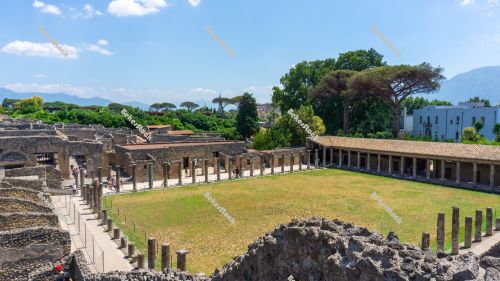
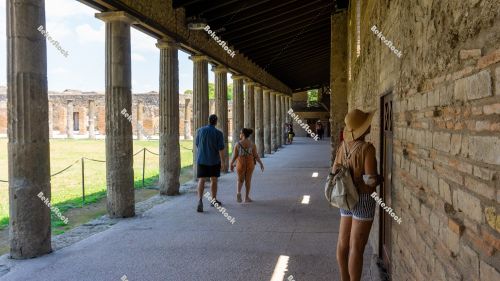
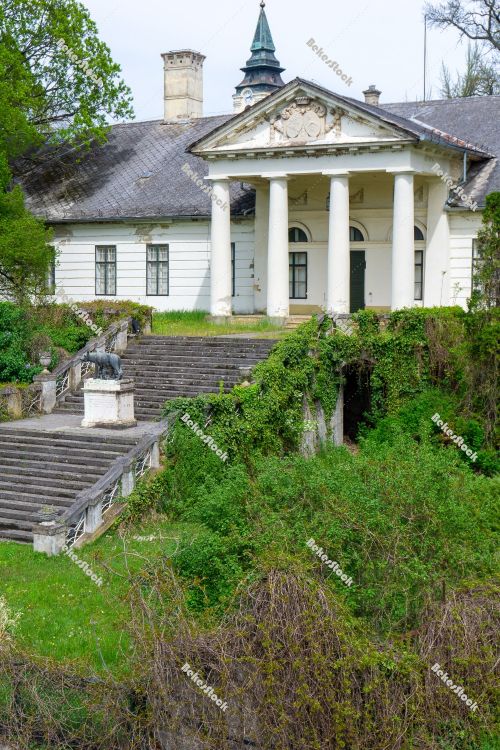


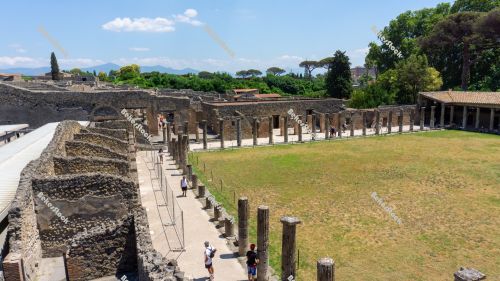
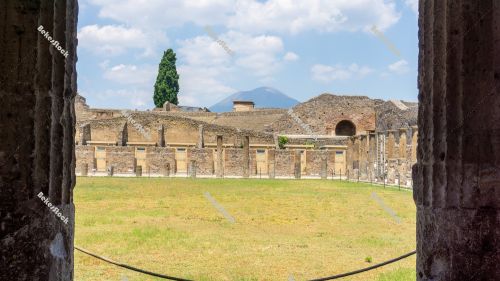
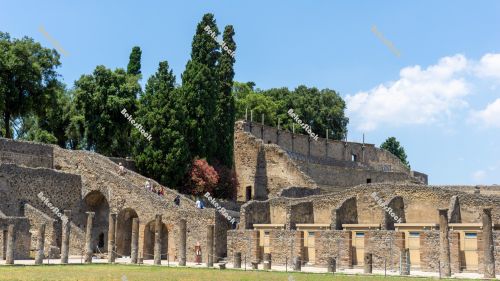
-
 Bolza Castle (`Bolza-kastély`). Szarvas, Bekes County, Hungary
Bolza Castle (`Bolza-kastély`). Szarvas, Bekes County, Hungary -
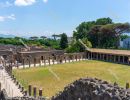 QUADRIPORTICUS OF THE THEATRES OR GLADIATORS BARRACKS in Pompeii
QUADRIPORTICUS OF THE THEATRES OR GLADIATORS BARRACKS in Pompeii -
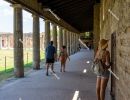 Cloister - QUADRIPORTICUS OF THE THEATRES OR GLADIATORS BARRACKS
Cloister - QUADRIPORTICUS OF THE THEATRES OR GLADIATORS BARRACKS -
 Bolza Castle (`Bolza-kastély`). Szarvas, Bekes County, Hungary
Bolza Castle (`Bolza-kastély`). Szarvas, Bekes County, Hungary -
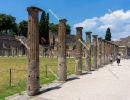 Cloister - QUADRIPORTICUS OF THE THEATRES OR GLADIATORS BARRACKS
Cloister - QUADRIPORTICUS OF THE THEATRES OR GLADIATORS BARRACKS -
 Closed wooden entrance door, Piran, Obalno-kraska, Slovenia, Jun
Closed wooden entrance door, Piran, Obalno-kraska, Slovenia, Jun -
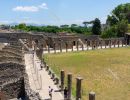 QUADRIPORTICUS OF THE THEATRES OR GLADIATORS BARRACKS in Pompeii
QUADRIPORTICUS OF THE THEATRES OR GLADIATORS BARRACKS in Pompeii -
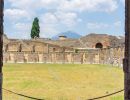 The view of Vesuvius from the Gladiators' Barracks. Pompei, Camp
The view of Vesuvius from the Gladiators' Barracks. Pompei, Camp -
 QUADRIPORTICUS OF THE THEATRES OR GLADIATORS BARRACKS in Pompeii
QUADRIPORTICUS OF THE THEATRES OR GLADIATORS BARRACKS in Pompeii

